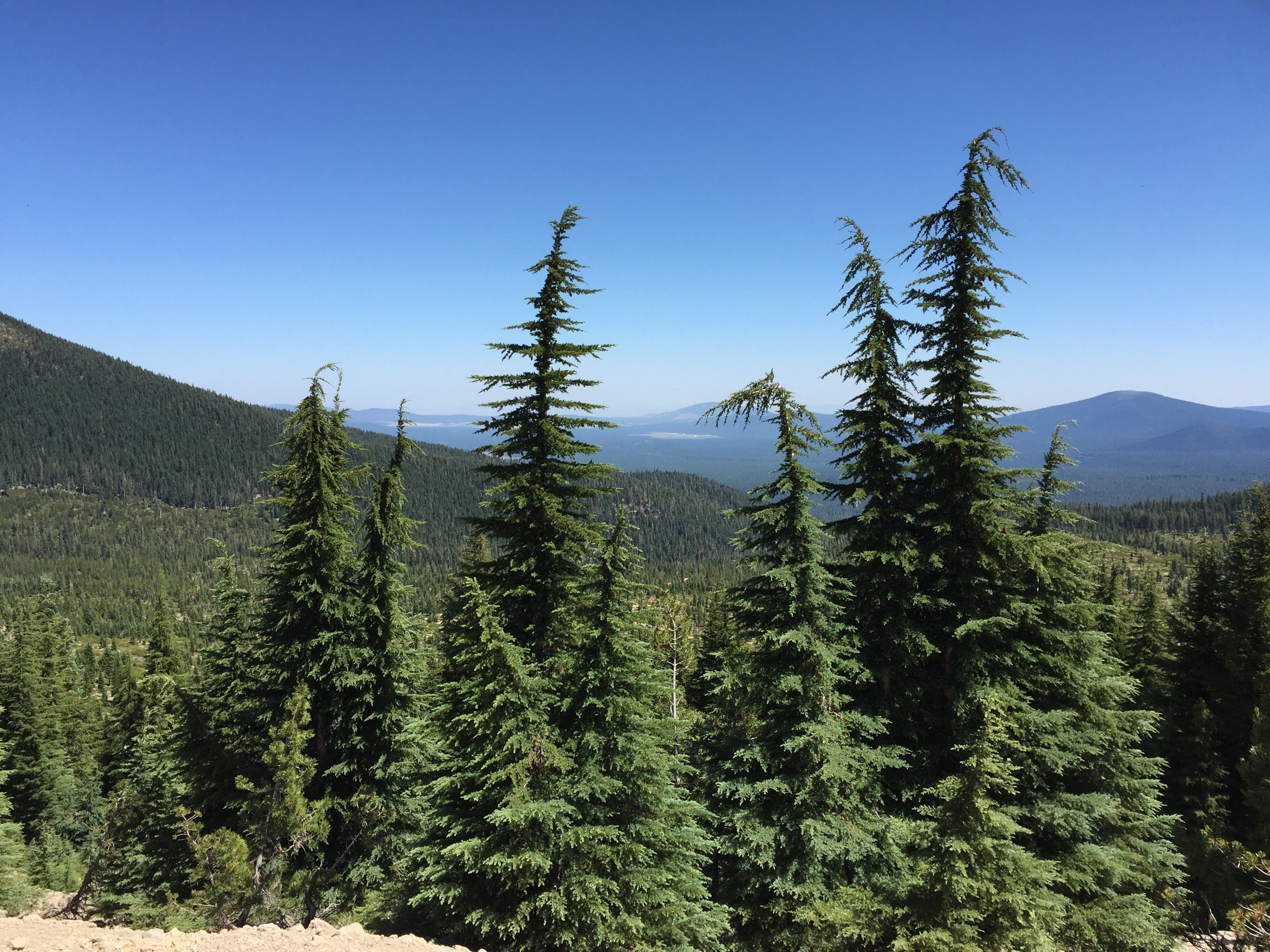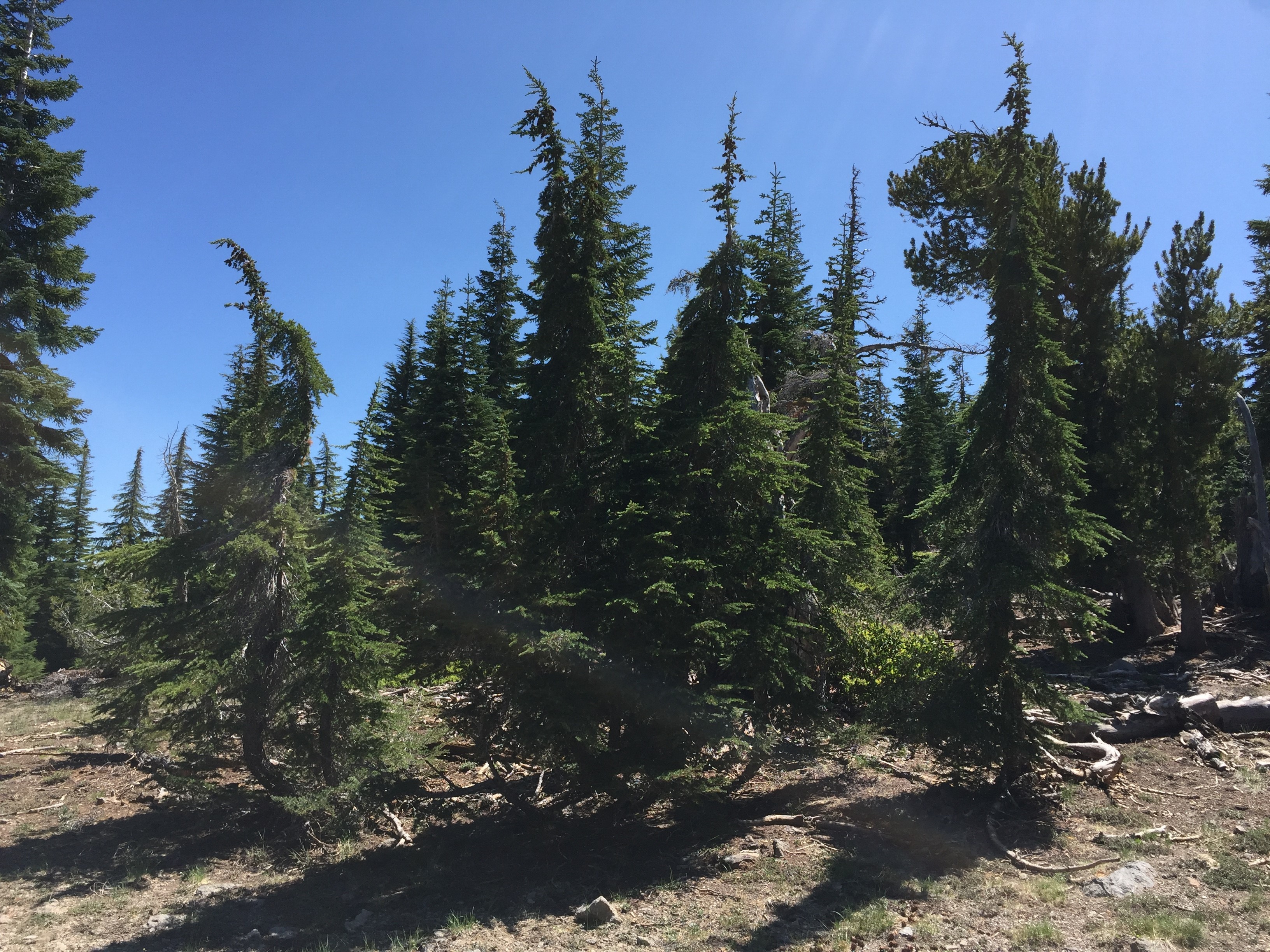Tsuga mertensiana subsp. grandicona was described by Aljos Farjon in 1988. In common parlance it does not necessarily have a separate name from the type, though a reasonable vernacular name would be California (mountain) hemlock or Sierra hemlock.
Description. California mountain hemlock is an evergreen coniferous trees which will grow to mature heights of 130 feet (40 m) tall with a 60 inch (150 cm) diameter trunk, measured at breast height and a conical crown.
It differs from subsp. mertensiana primarily in the larger (particularly broader) seed cones, with larger scales. The seed cones are also less often purple before maturity.
Distribution. This subspecies is endemic to USA - California, and just into southernmost Oregon and westernmost Nevada, in the high subalpine zones of the Sierra Nevada, Klamath, and southern Siskiyou mountain ranges at elevations of 5,900 to 11,000 feet (1,800 to 3,350 m) above sea level. Its habitat is moist mountain forests, mainly in sheltered north-facing sites close to alpine timberline. It often forms pure stands on slopes and in avalanche paths, being able to bend under heavy snow cover and afterwards upright itself.
There is virtually no timber cutting of this subspecies and it is present in several protected areas, including well-known national parks. It is adaptable to a wide variety of climatic conditions and can be used as an ornamental in garden settings, but is slow to start and difficult to establish.

